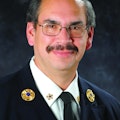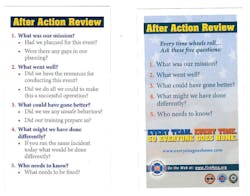As Firehouse Sees It: Saving Lives and Staying Safe At the Same Time
In this issue, we are proud to present our annual Firehouse® Magazine Heroism and Community Service Awards. Starting in the 1970s, we have been paying tribute to “the bravest of the brave.” On land, in the air and at sea, on duty and off duty, these members have saved the lives of countless people in the most precarious situations.
This year, we thank the three judges who reviewed the acts of heroism: Chief Tim Scranton of the Beverly Hills, CA, Fire Department; Deputy Fire Chief Billy Goldfeder of the Loveland-Symmes, OH, Fire Department; and Chief Mark McLees (ret.) of the Syracuse, NY, Fire Department. We also express our gratitude to our corporate sponsors, for without their generosity this program would not be possible: Aladec Inc. Fire Manager, Alert All Corp. Amkus Rescue Systems, Blackinton, Columbia Southern University, eDispatches, Fire Station Outfitters, Liberty Art Works, New York State Association of Fire Chiefs, Phenix Technology, Waterous Co. and Waterway Franchise LLC. We also thank Paul Hashagen, Elizabeth Friszell Neroulas and Steven Shaw, who administer the program.
Occasionally, we receive comments about acts of heroism that may be considered risky, unsafe, reckless and controversial. Some people contend that we glorify such acts. Firefighting is a dangerous business, as we all know. As a firefighter friend tells me, “If I wanted to stay safe, I would remain in my living room.” That said, firefighters sometimes find themselves in serious, unpredictable situations. With more emphasis on personal size-up, use of full protective gear, risk-vs.-reward assessments, Every One Goes Home and other programs designed for accountability and reducing freelancing, maybe the message is getting across.
Since 1978, our heroism awards program has honored individuals and units that have gone above and beyond the call of duty. We have difficult decisions to make with each application: What were the conditions? One of my closest advisors always asked what happened to the rescuer? If the conditions were as extreme as stated and the member suffered no injuries or burns, was he or she fully protected or were the conditions in fact not so bad? The more descriptive the applications, the better the judges will be able to assess each act of heroism. We give the same treatment to entries submitted by a smaller department that explains a rescue in less detail as those from a large metropolitan department where there is much competition and extensive descriptions and diagrams are submitted.
If a firefighter makes a rescue in your department or area, you can go to our website to download a heroism package to nominate that person for recognition. You don’t have to wait until the end of the year to submit an application. Those making the rescues or providing the community service can’t be recognized if they are not nominated.
In 2004, the National Fallen Firefighters Foundation (NFFF) and U.S. Fire Administration (USFA) announced “The 16 Firefighter Life Safety Initiatives,” detailing “initiatives and recommendations for drastically reducing firefighter fatalities and injuries.” Recently, I attended the rollout of Initiative 13, “Firefighters and their families must have access to counseling and psychological support.” These programs, five years in the making and spearheaded by national and international leaders in the field of psychological support, make it easy for firefighters and their families to obtain help. In particular, the programs will help firefighters deal with psychological stress from the job’s routine and extraordinary events. For more information about the new behavioral health model, go to www.lifesafetyinitiatives.com.
Similarly, the NFFF proposes that every unit conduct an After Action Review (AAR) after every response. According to NFFF website, “The first step in observing stress in firefighters and EMS personnel begins with at the ‘back step’ or kitchen table, where every call and response is discussed…After every training exercise, every call, every time firefighters and EMTs are performing their duties, five simple questions are asked:
1. What was our mission?
2. What went well?
3. What could have gone better?
4. What might we have differently?
5. Who needs to know?
For more information, see http://flsi13.everyonegoeshome.com/after-action-review.html.
For comments and suggestions, please contact us at [email protected].
TO BECOME AN ORGAN DONOR, SEE www.organdonor.gov & CHECK YOUR STATE’S REGULATIONS
13
2013 firefighter line-of-duty deaths at press time
668
2013 residential fire fatalities at press time
Follow us on
About the Author

Harvey Eisner
Editor Emeritus
HARVEY EISNER was named Editor Emeritus of Firehouse® after serving 15 years as Firehouse's Editor-in-Chief. He joined the Tenafly, NJ, Fire Department in 1975 and served as chief of department for 12 years. He was a firefighter in the Stillwater, OK, Fire Department for three years while attending Oklahoma State University. Eisner was an honorary assistant chief of the FDNY and program director for the Firehouse Expo, Firehouse World and Firehouse Central conferences. He covered many major fires and disasters and interviewed numerous fire service leaders for Firehouse®
